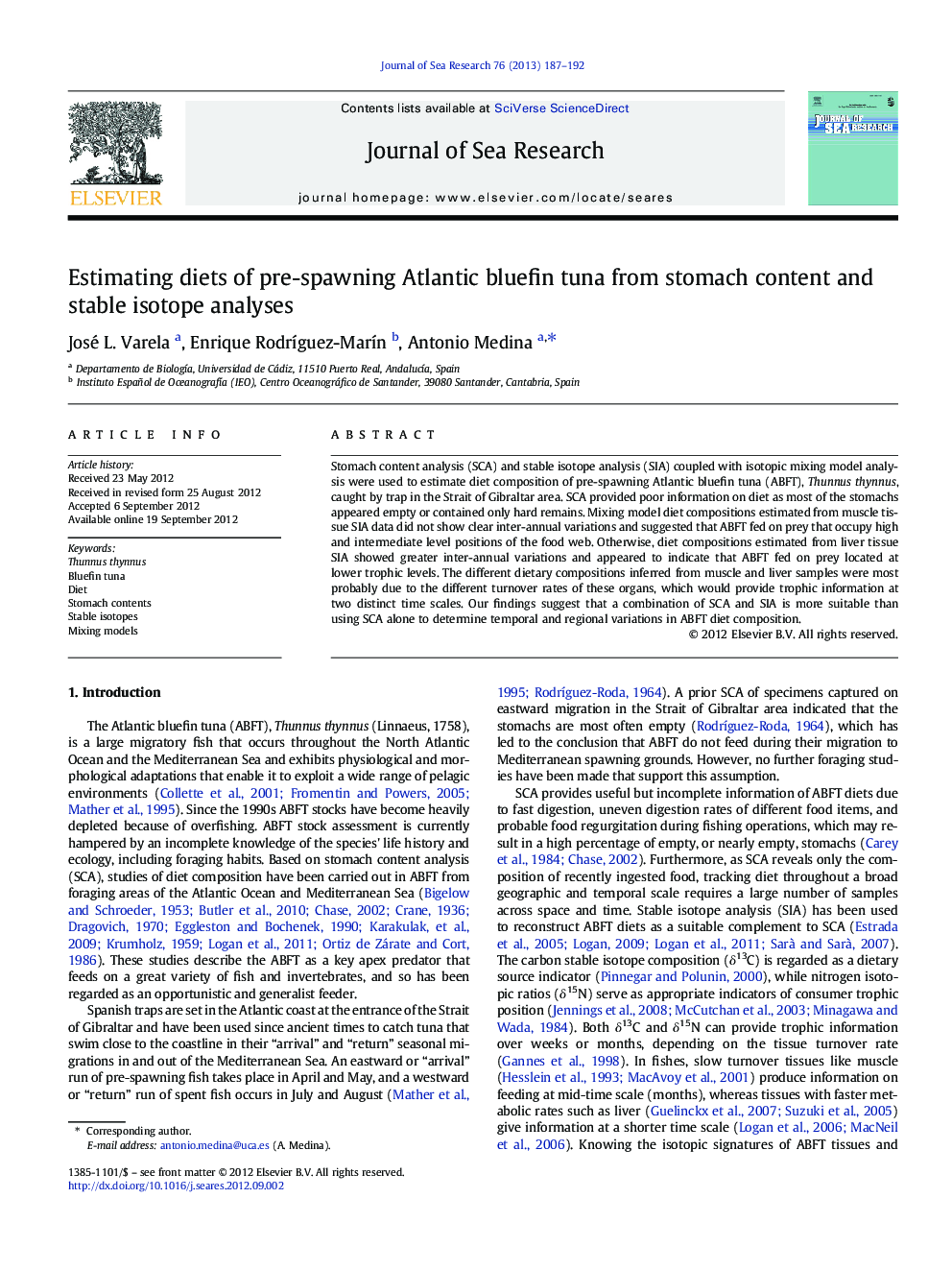| Article ID | Journal | Published Year | Pages | File Type |
|---|---|---|---|---|
| 4549898 | Journal of Sea Research | 2013 | 6 Pages |
Stomach content analysis (SCA) and stable isotope analysis (SIA) coupled with isotopic mixing model analysis were used to estimate diet composition of pre-spawning Atlantic bluefin tuna (ABFT), Thunnus thynnus, caught by trap in the Strait of Gibraltar area. SCA provided poor information on diet as most of the stomachs appeared empty or contained only hard remains. Mixing model diet compositions estimated from muscle tissue SIA data did not show clear inter-annual variations and suggested that ABFT fed on prey that occupy high and intermediate level positions of the food web. Otherwise, diet compositions estimated from liver tissue SIA showed greater inter-annual variations and appeared to indicate that ABFT fed on prey located at lower trophic levels. The different dietary compositions inferred from muscle and liver samples were most probably due to the different turnover rates of these organs, which would provide trophic information at two distinct time scales. Our findings suggest that a combination of SCA and SIA is more suitable than using SCA alone to determine temporal and regional variations in ABFT diet composition.
► SCA and SIA coupled with mixing model analysis were used to assess bluefin tuna diets. ► SCA provided poor information on the diet components. ► Dietary compositions estimated from SIA of muscle and liver tissues differed. ► SIA proved a suitable complement to SCA in studies of bluefin tuna foraging.
